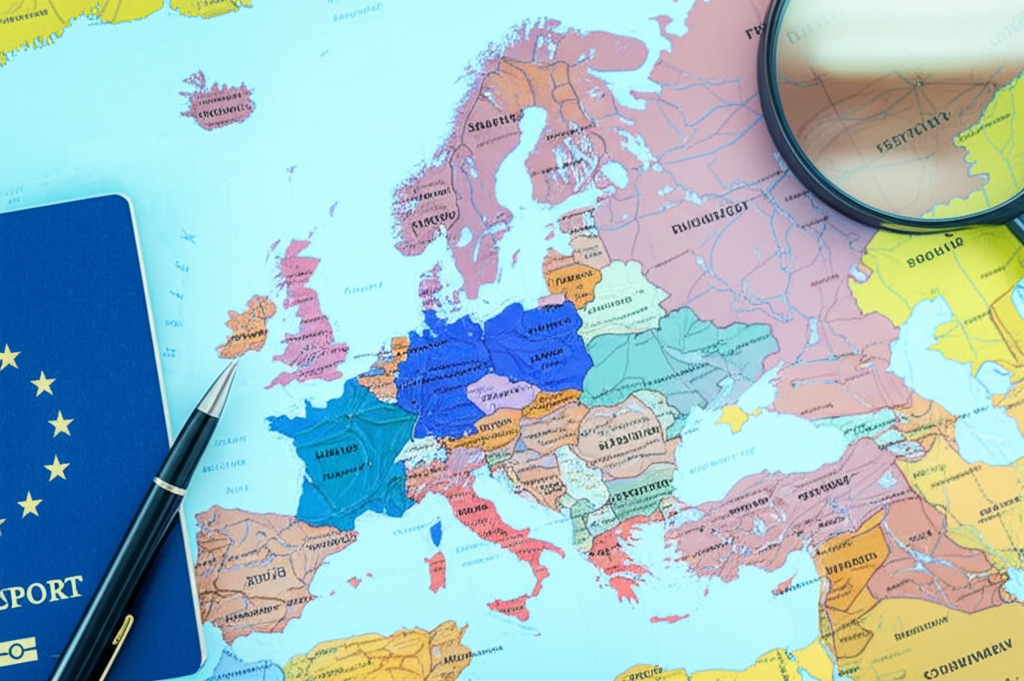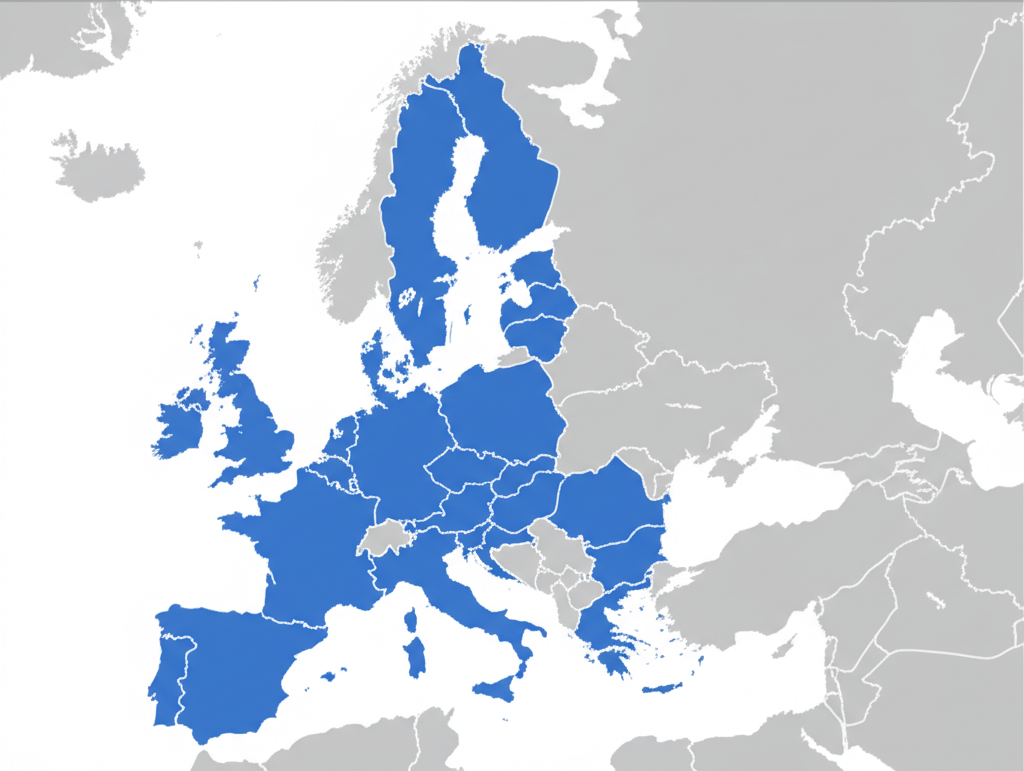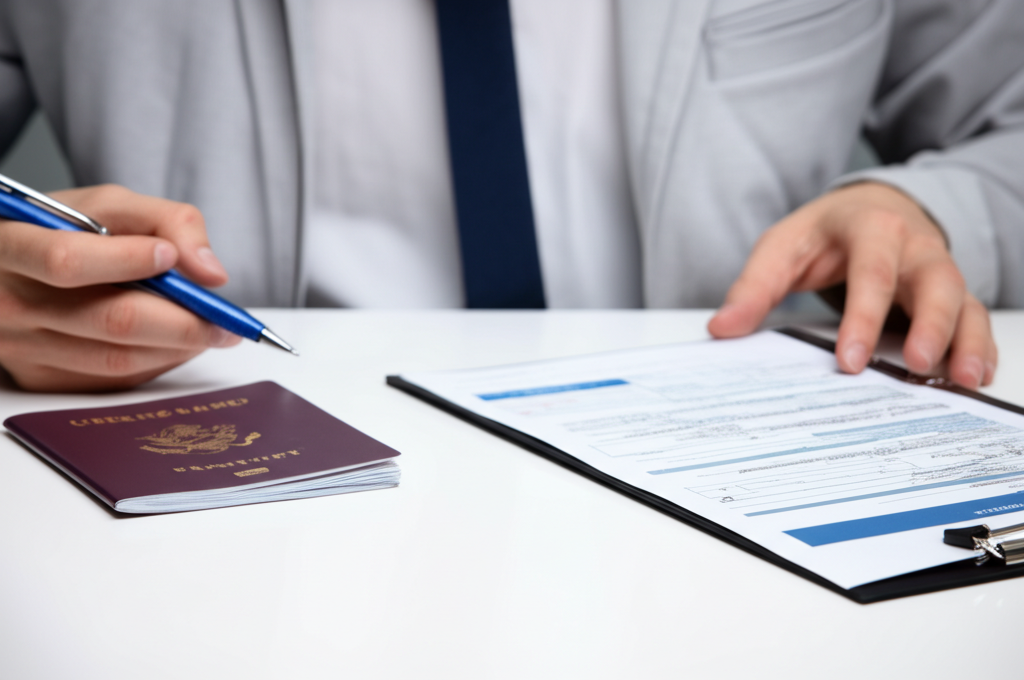Complete Guide to Schengen Visa Requirements in 2025
Everything you need to know about Schengen visa requirements and application process in 2025.

Complete Guide to Schengen Visa Requirements in 2025

Introduction
This guide covers everything you need to know about Schengen visa requirements in 2025. The Schengen Area comprises 27 European countries that have officially abolished border controls at their mutual borders, allowing for free movement between member states. For many non-EU citizens, obtaining a Schengen visa is an essential step in planning a European journey.
Important: Always check the official website of the embassy or consulate of the country you plan to visit, as requirements can change and may vary slightly between Schengen member states.
Eligibility and Types
Different types of Schengen visas are available depending on your travel purpose. Understanding which visa type you need is the first step in a successful application:
| Visa Type | Purpose | Duration |
|---|---|---|
| Type C (Short-Stay) | Tourism, business, visiting family/friends, cultural events | Up to 90 days within a 180-day period |
| Type A (Airport Transit) | Transit through the international area of a Schengen airport | Limited to airport transit zone |
| Type D (National Visa) | Study, work, family reunification (long-term) | More than 90 days |
Type C visas can be further categorized based on the number of entries permitted:
- Single-entry: Allows one entry into the Schengen Area
- Double-entry: Allows two entries into the Schengen Area
- Multiple-entry: Allows unlimited entries during the visa validity period

Required Documents
Prepare documents including your passport, travel insurance, and proof of accommodation. The standard documentation required for a Schengen visa application includes:
Basic Requirements
- Completed and signed visa application form
- Valid passport (issued within the last 10 years, valid for at least 3 months beyond your planned departure date from Schengen Area)
- Two recent passport-sized photos (35mm x 45mm, color, white background)
- Visa fee payment receipt (€80 for adults, €40 for children aged 6-12)
- Travel medical insurance (minimum coverage €30,000)
- Round-trip flight reservation
Supporting Documents
- Proof of accommodation for your entire stay
- Proof of financial means (bank statements from the last 3-6 months)
- Proof of employment status (employment contract, pay slips)
- Detailed travel itinerary
- Proof of integration (family ties, economic situation in home country)
- For business: Invitation letter from the company in the Schengen Area
Tip: Organize your documents in the order listed on the embassy's checklist. Use dividers or paper clips to separate sections, making it easier for consular officers to review your application.
Travel Medical Insurance Requirements
Your travel insurance policy must meet specific criteria:
- Minimum coverage of €30,000 for medical expenses
- Valid throughout the Schengen Area
- Cover the entire duration of your stay
- Include emergency medical treatment and repatriation
Application Process
The application process involves submitting your application to the appropriate embassy or consulate. Follow these steps for a smooth application process:
-
Determine the Correct Embassy/Consulate
Apply at the embassy/consulate of your main destination (where you'll spend the most days). If you'll spend equal time in multiple countries, apply to the country you'll enter first.
-
Complete the Application Form
Fill out the harmonized Schengen visa application form. Most countries now offer online forms that can be completed and printed before your appointment.
-
Schedule an Appointment
Book an appointment at the visa application center or embassy. In many countries, this is handled through external service providers like VFS Global or TLScontact.
-
Pay the Visa Fee
Pay the non-refundable visa fee (€80 for adults, €40 for children aged 6-12, free for children under 6). Some categories like students or researchers may qualify for fee waivers.
-
Attend the Appointment
Submit your documents and provide biometric data (fingerprints and digital photograph) if you haven't provided them within the last 59 months.
-
Track Your Application
Most visa centers provide a tracking number to check your application status online.
-
Collect Your Passport
Once processed, collect your passport with the visa or rejection notice. Some centers offer courier delivery for an additional fee.

Processing Time and Fees
Processing times and fees vary by country and visa type. Here's what to expect in 2025:
| Category | Standard Processing | Expedited Processing | Fee |
|---|---|---|---|
| Adult (12+ years) | 15 calendar days | 5 working days (if available) | €80 |
| Child (6-11 years) | 15 calendar days | 5 working days (if available) | €40 |
| Child (0-5 years) | 15 calendar days | 5 working days (if available) | Free |
| Service Fee (VFS/TLS) | N/A | N/A | €30-40 |
| Expedited Processing | N/A | N/A | Additional €60 |
Additional fees may apply for optional services:
- Premium lounge service: €25-35
- SMS notifications: €5-10
- Courier return service: €15-25
- Photo service: €8-15
- Form filling assistance: €20-30
Fee Exemptions: Certain categories are exempt from visa fees, including children under 6 years, students and accompanying teachers on study trips, researchers traveling for scientific research, and representatives of non-profit organizations aged 25 or less participating in seminars, conferences, or sporting/cultural events.
Tips for Approval
Increase your chances of approval by providing complete and accurate documentation. Here are some expert tips:
Documentation Tips
- Provide original documents plus copies
- Translate documents into English or local language
- Include a cover letter explaining your trip
- Ensure photos meet exact specifications
- Organize documents according to checklist
Application Tips
- Apply at least 15-30 days before travel
- Be consistent across all documents
- Provide detailed day-by-day itinerary
- Show strong ties to your home country
- Demonstrate sufficient financial means
Interview Tips
- Dress professionally
- Answer questions confidently and truthfully
- Know your itinerary details
- Explain the purpose of your visit clearly
- Bring additional supporting documents
Common Reasons for Rejection
Understanding common rejection reasons can help you avoid them:
- Insufficient documentation: Missing or incomplete required documents
- Unclear travel purpose: Vague or inconsistent explanation of why you're traveling
- Insufficient financial means: Not demonstrating enough funds to cover your stay
- Weak ties to home country: Not proving you have reasons to return home
- Previous immigration violations: History of overstays or visa violations
- Inconsistent information: Contradictions between application form and supporting documents
- Invalid travel insurance: Insurance that doesn't meet Schengen requirements

2025 Updates and Changes
Several important changes to the Schengen visa system have been implemented in 2025:
| Change | Details | Impact |
|---|---|---|
| Digital Visa Application | Fully digital application process implemented across all Schengen states | Streamlined process, reduced paperwork |
| ETIAS Implementation | European Travel Information and Authorization System for visa-exempt travelers | Additional pre-screening for visa-free travelers |
| Increased Fees | Standard fee increased from €80 to €90 | Higher application cost |
| Extended Multiple-Entry Visas | Easier access to 3-5 year multiple-entry visas for frequent travelers | Reduced need for repeated applications |
| Biometric Updates | Biometric data validity extended from 59 to 72 months | Less frequent biometric collection |
Special Categories
Some travelers may qualify for simplified procedures:
Simplified Procedures
- Family members of EU/EEA citizens: Free visas with expedited processing
- Business travelers with track record: Eligible for multi-year multiple-entry visas
- Diplomatic passport holders: Often exempt from visa requirements
- Students at recognized institutions: Simplified documentation and possible fee waiver
Required Additional Documents
- Students: Enrollment certificate, accommodation proof
- Business travelers: Invitation letter, company sponsorship letter
- Medical tourists: Medical appointment confirmation, financial arrangements
- Conference attendees: Registration confirmation, invitation letter
After Receiving Your Visa
Once you receive your Schengen visa, take these important steps:
- Verify visa details: Check that all information is correct (name, passport number, validity dates)
- Understand visa conditions: Note the number of entries permitted and validity period
- Make copies: Keep digital and physical copies of your visa and passport
- Prepare for border control: Have your accommodation details, return ticket, and insurance proof ready
- Calculate your stay carefully: Remember the 90/180 day rule (maximum 90 days in any 180-day period)
Warning: Overstaying your Schengen visa, even by a single day, can result in fines, deportation, and difficulty obtaining future visas. The Schengen Information System tracks entries and exits electronically.
Conclusion
Proper preparation is essential for a successful Schengen visa application. By understanding the requirements, preparing thorough documentation, and following the application procedures carefully, you can increase your chances of approval and enjoy your European journey without complications.
Remember that visa requirements can vary slightly between different Schengen member states and may change over time. Always check the official website of the embassy or consulate where you'll apply for the most current information.
With careful planning and attention to detail, obtaining a Schengen visa can be a straightforward process, opening the door to exploring the rich cultural heritage, stunning landscapes, and diverse experiences that Europe has to offer.
Key Takeaways
- Apply at least 15-30 days before your planned trip
- Determine the correct embassy based on your main destination or first entry point
- Prepare complete documentation, including proof of accommodation and financial means
- Ensure your travel insurance meets Schengen requirements
- Demonstrate strong ties to your home country to prove your intention to return
This guide is based on Schengen visa regulations as of January 2025. For the most current information, always consult the official website of the embassy or consulate where you plan to apply.